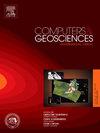Time reversal imaging and transfer learning for spatial and temporal seismic source location
IF 4.2
2区 地球科学
Q1 COMPUTER SCIENCE, INTERDISCIPLINARY APPLICATIONS
引用次数: 0
Abstract
This article presents the application of Time Reversal Imaging (TRI) and transfer learning methods for spatial and temporal seismic wave location. The study applies the ResNet-50 model, pre-trained on the basis of ImageNet images, and later retrained using seismic wave field component images. The objective of the study was to provide an accurate classification of seismic source areas and determine the temporal localization of seismic events.
The research involved training the ResNet-50 model based on datasets of wave field component images obtained through the backpropagation of reversed waveforms in simplified geological models. The classification was evaluated using performance metrics. Additionally, to assess its effectiveness in realistic scenarios the methodology was applied to the complex Marmousi velocity model.
The results show that the combined TRI and transfer learning approach is highly effective in classifying seismic source areas. The trained model successfully identifies patterns unique to seismic wave components, enabling precise spatial localization. Additionally, the method accurately determines the focusing time, which is essential for the temporal localization of seismic events. The article includes research on the influence of receiver network geometry on localization outcomes. By examining various receiver configurations, valuable insights have been gained, further improving the practical applicability of the method.
The study highlights the potential for further advances by extending the methodology to three-dimensional models, although there remains a need to address various computational challenges. Three-dimensional modeling would enhance the accuracy of source localization, especially in the case of seismic sources characterized by dominant isotropic components.
In conclusion, the combination of TRI and transfer learning presents a promising approach for ensuring precise spatial and temporal seismic wave location. This methodology has the potential to enhance seismic monitoring, early warning systems, and make a significant contribution to earthquake engineering and hazard assessment.
时空震源定位的时间反演成像与迁移学习
本文介绍了时间反转成像(TRI)和迁移学习方法在时空地震波定位中的应用。本研究采用ResNet-50模型,在ImageNet图像的基础上进行预训练,然后使用地震波场分量图像进行再训练。这项研究的目的是提供一个准确的震源区分类和确定地震事件的时间定位。研究内容是基于简化地质模型中反向传播波形获得的波场分量图像数据集,对ResNet-50模型进行训练。使用性能指标对分类进行评估。此外,为了评估其在现实场景中的有效性,将该方法应用于复杂的Marmousi速度模型。结果表明,TRI和迁移学习相结合的方法对震源区分类是非常有效的。经过训练的模型成功地识别了地震波分量的独特模式,实现了精确的空间定位。此外,该方法还能准确地确定聚焦时间,这对地震事件的时间定位至关重要。本文研究了接收机网络几何形状对定位结果的影响。通过研究不同的接收器配置,获得了有价值的见解,进一步提高了该方法的实际适用性。该研究强调了将该方法扩展到三维模型的进一步发展潜力,尽管仍然需要解决各种计算挑战。三维建模可以提高震源定位的精度,特别是在以各向同性分量为主的震源情况下。综上所述,TRI和迁移学习的结合为确保精确的时空地震波定位提供了一种有前途的方法。这种方法有可能加强地震监测、早期预警系统,并对地震工程和灾害评估作出重大贡献。
本文章由计算机程序翻译,如有差异,请以英文原文为准。
求助全文
约1分钟内获得全文
求助全文
来源期刊

Computers & Geosciences
地学-地球科学综合
CiteScore
9.30
自引率
6.80%
发文量
164
审稿时长
3.4 months
期刊介绍:
Computers & Geosciences publishes high impact, original research at the interface between Computer Sciences and Geosciences. Publications should apply modern computer science paradigms, whether computational or informatics-based, to address problems in the geosciences.
 求助内容:
求助内容: 应助结果提醒方式:
应助结果提醒方式:


